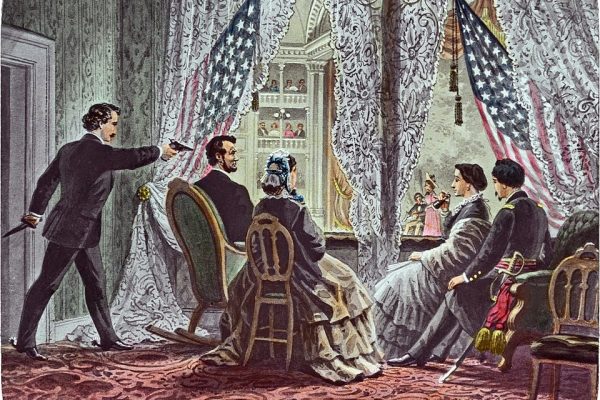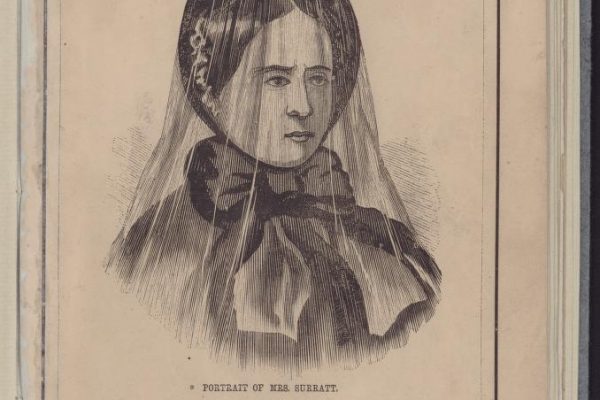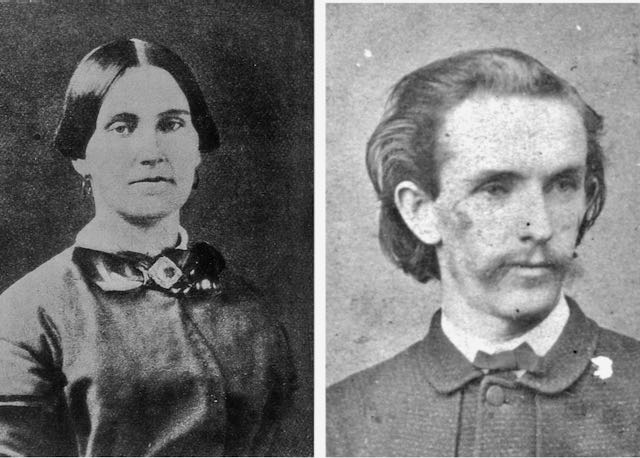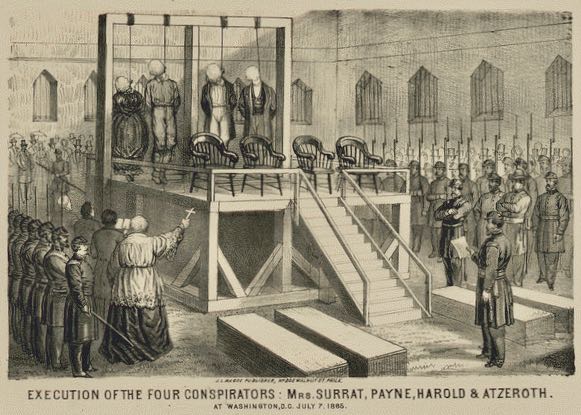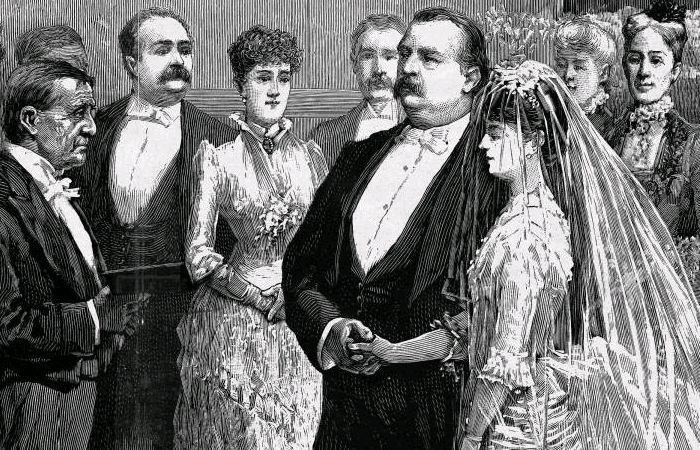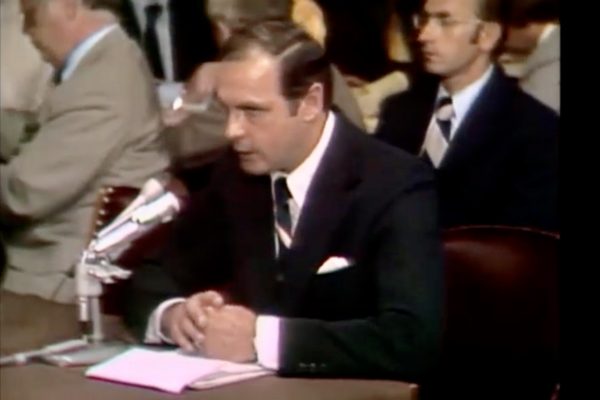
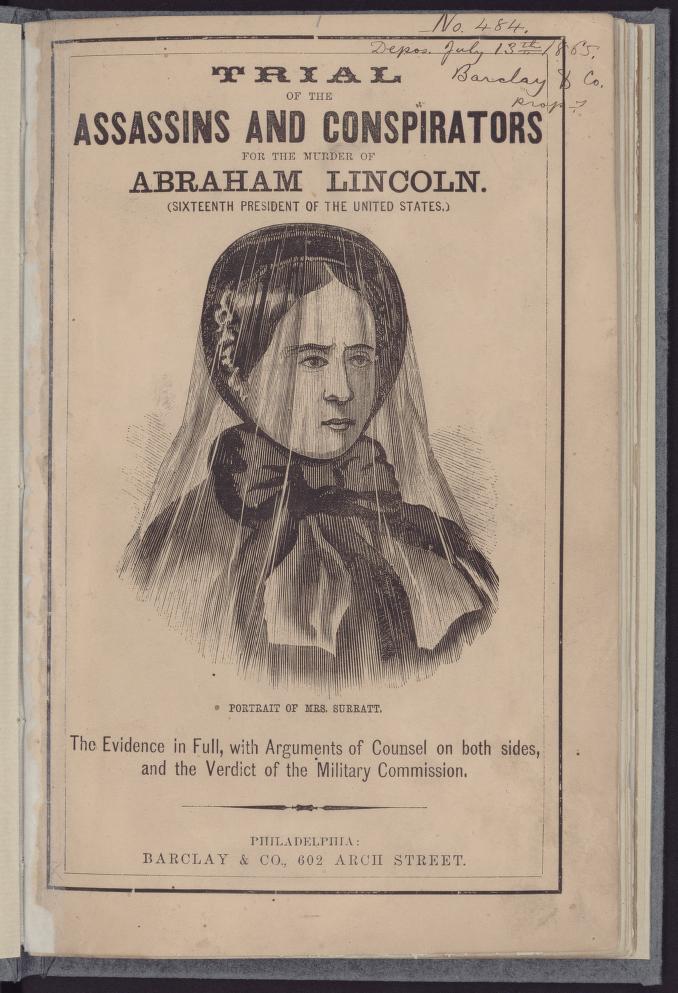
First Woman Executed by the U.S. Government
On July 7, 1865, Mary Surratt made history under tragic circumstances when she became the first woman executed by the United States government. The 42-year-old boarding house owner was convicted of conspiring to assassinate President Abraham Lincoln.
Surratt Boarding House Changed History

Mary Surratt operated a boarding house where John Wilkes Booth, the actor who shot Lincoln, received mail and planned his conspiracy. It was just blocks from Ford’s Theatre, the site of Lincoln’s assassination. Booth was later killed by Union troops during a manhunt as he tried to escape through southern Maryland.
Other conspirators charged in the plot to kill Lincoln also used the boarding house. George Atzerodt, who was assigned to kill Vice President Andrew Johnson but lost his nerve, and Lewis Powell, who attacked Secretary of State William Seward, both stayed there for short periods. Her son, John Surratt Jr., worked as a Confederate spy and helped recruit other accomplices.
President Andrew Johnson stated that she “kept the nest that hatched the egg” of assassination.
The government’s case against Surratt relied heavily on the testimony of tavern keeper John Lloyd, who claimed she told him to have “shooting irons” ready for pickup. Boarder Louis Weichmann also testified about her relationships with the conspirators. However, historical accounts suggest Weichmann later claimed the government forced his testimony, which plagued his conscience for life.
Her Son’s Escape and Her Fate
While Mary Surratt faced trial, her son, John Surratt Jr., fled to Canada, England, the Vatican, and eventually Egypt. When he was captured and extradited in 1867, he faced a civil court, unlike his mother. His jury, which was reportedly packed with Southern sympathizers, declared a mistrial.
According to historical accounts, many viewed John as a coward who left his mother to die for his crimes. This created a stark contrast, with the son escaping justice while the mother paid the ultimate price.
The Controversial Military Trial
Government officials chose a military tribunal over civilian courts to prosecute Surratt and her fellow defendants, which in addition to Atzerodt and Powell included Samuel Arnold, Edmund Spangler and Samuel Mudd. The military proceedings were believed to offer more flexible evidence rules to expose what was feared to be a sprawling conspiracy. Some legal scholars have questioned this decision, given that civilian courts were operating normally.
After a hastily scheduled trial and only two days of deliberation, four of the conspirators, Surratt, Atzerodt, Powell and Herold, who accompanied Booth on his escape, were sentenced to hang. Five of the nine judges at her trial requested clemency from President Johnson due to her age and sex. The execution was delayed until the afternoon, and soldiers were stationed on every block between the White House and Fort McNair to relay the expected pardon, but the order never came.
Under the Gallows
The heat at the Washington Arsenal was punishing, nearing 100 degrees. At 1:15 p.m., when the prisoners were led out to the courtyard, Surratt was dressed in black, with a bonnet and veil. She stumbled toward the scaffold, and two soldiers carried her up the 15 steps. Witnesses reported she swooned upon seeing the nooses, and an umbrella was held over her head to prevent fainting.
The hangman, in his first execution of a woman, struggled with how to bind her legs due to her dress, eventually deciding to bind them over the fabric.
When Surratt’s hat and veil were removed for the noose, the crowd reportedly became visibly unsettled. Before her hanging, she asked the guard not to let her fall. Even in his final moments, Lewis Powell proclaimed Mary Surratt’s innocence to his executioner.
At approximately 1:22 p.m., Mary Surratt became the first woman executed by the United States government.
Why It Was Controversial
- Gender precedent: No woman had ever been executed by the federal government, shocking a nation that viewed women as incapable of such crimes
- Evidence concerns: Her conviction rested on witness testimony that some questioned
- Military vs. civilian trial: Some legal scholars questioned using military tribunals when civilian courts operated normally
- Speed of justice: From verdict to execution in just seven days
From Execution Site to Modern Lessons
Today, Grant Hall, the trial and execution site at Fort McNair, houses the Defense Department’s Africa Center for Strategic Studies. Military officers from around the world study international law where America first executed a woman. Local accounts over the years suggest the location’s haunted reputation persists, with sightings of Mary Surratt’s ghost, described as a hooded figure in black, bound at hands and feet.
Mary Surratt’s story illustrates how proximity to power and political upheaval can transform lives in Washington. Her case, as a boarding house owner central to America’s most infamous conspiracy, demonstrates how personal choices intersect with national crises, creating legal precedents that continue to resonate in American justice today.
Feature Photo: Sketch of Mary Surratt on the cover of the trial’s proceeding courtesy of the Library of Congress.


